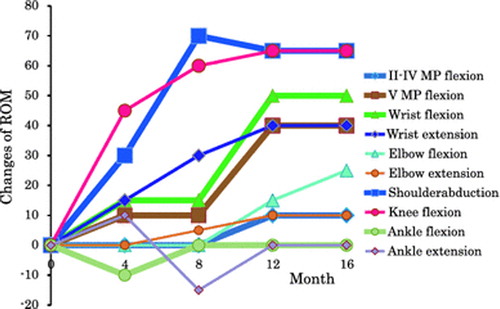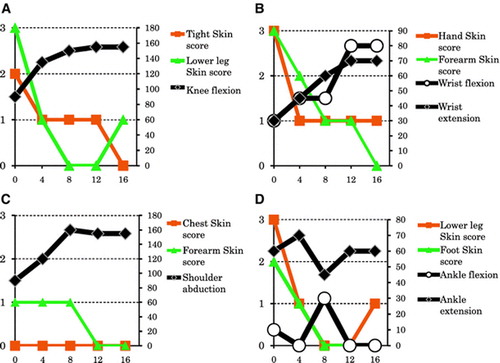Figures & data
Table 1 Laboratory data before TCZ therapy initiation
Fig. 1 Impact of tocilizumab (TCZ) on joint mobility in a patient with SSc. Joint range of motion (ROM) was initially set to zero, and data are expressed as the degree of improvement during the 16-month TCZ therapy. The horizontal axis indicates months after TCZ initiation. All ROM values, except for those in the ankles, improved considerably after 4 months and continued to improve until the end of study. The unit of angle is degrees

Fig. 2 Relationship between joint mobility and skin sclerosis in a SSc patient during TCZ treatment. The left vertical axis indicates the modified Rodnan total skin score, and the right vertical axis indicates ROM value. The horizontal axis indicates months after TCZ initiation. The skin scores for the knee (a), wrist (b), and shoulder (c) joints decreased as the ROM increased. In contrast, the ROM of the ankle joint did not improve, even though the skin scores of the lower leg and foot decreased to 0 after 8 months (d)

